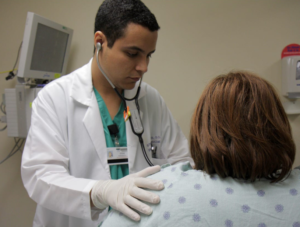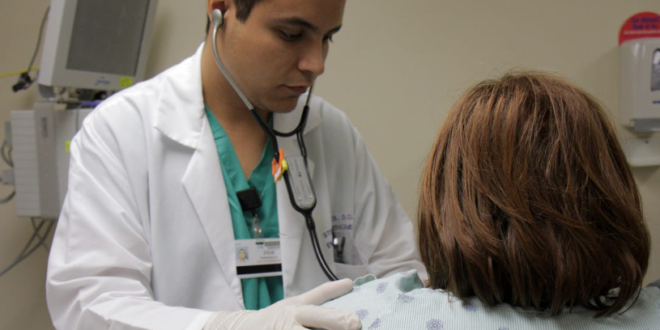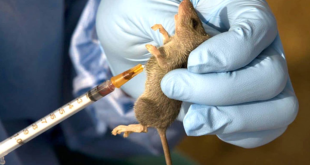The major and most common symptoms of COVID-19 are fever, tiredness, and dry cough. Some patients may have aches and pains, nasal congestion, runny nose, sore throat or diarrhea. These symptoms are usually mild and begin gradually. Some people become infected but don’t develop any symptoms and don’t feel unwell. Most people (about 80%) recover from the disease without needing special treatment. Around 1 out of every 6 people who gets COVID-19 becomes seriously ill and develops difficulty breathing. Older people, and those with underlying medical problems like high blood pressure, heart problems or diabetes, are more likely to develop serious illness. People with fever, cough and difficulty breathing should seek medical attention.

What does shortness of breath mean in Coronavirus (COVID-19)?
Shortness of breath refers to unexpectedly feeling out of breath, and gasping for air. Actually there may be times when shortness of breath may just be temporary and a cause for serious concern. Such cases can be witnessed when we are feeling very anxious, it’s common to get short of breath and then it goes away when you calm down.
However, if you find that you are ever breathing harder or having trouble getting air each time you exert yourself, you always need to call your doctor. That was true before we had the recent outbreak of COVID-19, and it will still be true after it is over.
Meanwhile, it’s important to remember that if shortness of breath is your only symptom, without a cough or fever, something other than COVID-19 is the likely problem.
Also Read: Coronavirus (COVID19)
How Long Before Symptoms in Coronavirus Disease?
Normally, it will take some time between when a person is exposed to the virus and when they start showing symptoms. This period of time is known as the incubation period. At the moment, the time from exposure to symptom onset for most people is yet to be determined. Based on current information however, symptoms could appear as soon as three days after exposure to as long as 13 days later. Recently published research found that on average, the incubation period is about five days.
What are the Transmission Routes of Coronavirus (COVID19)?
Majorly, it is believed that the coronavirus is spread mainly from person to person. This can happen between people when they are in close contact. Droplets that are produced when an infected person coughs or sneezes may land in the mouths or noses of people who are nearby, or possibly be inhaled into their lungs.
However, coronavirus can also spread from contact with infected surfaces or objects. For example, a person can get COVID-19 by touching a surface or object that has the virus on it and then touching their own mouth, nose, or possibly their eyes.
How deadly is Coronavirus (COVID19)?
This depends on whether you’re looking at the fatality rate (the risk of death among those who are infected) or the total number of deaths. So far, influenza has caused far more deaths this flu season, both in the US and worldwide, than COVID-19. This is why you may have heard it said that the flu is a bigger threat.
concerning the fatality rate, it appears that the risk of death with the pandemic coronavirus infection (commonly estimated at 3% to 4%) is less than it was for SARS (approximately 11%) and MERS (about 35%), but may be higher than the risk from seasonal flu (which averages about 0.1%).
What we do know so far is the risk of death very much depends on your age and your overall health. Children appear to be at very low risk of severe disease and death. Older adults and those with chronic diseases such as diabetes, heart disease, or lung disease have a higher chance of developing complications like pneumonia, which could be deadly.
Who is at highest risk for getting very sick from Coronavirus (COVID19)?
Older people, especially those with underlying medical problems like chronic bronchitis, emphysema, heart failure, or diabetes, are more likely to develop serious illness. In addition, several underlying medical conditions may increase the risk of serious COVID-19 for individuals of any age. These include:
Are children immune to the virus that causes COVID19?
Children, including very young children, can develop COVID-19. However, children tend to experience milder symptoms such as fever and cough. Some children have had severe complications, but this has been less common. Children with underlying health conditions may be at increased risk for severe illness.
Prevention of Coronavirus (COVID19) Disease
The actions and steps that can help prevent the spread of COVID-19 are as follows:-
- Constant washing of hands with soap and water.
- Avoid close contact with people who are sick.
- Avoid touching your eyes, nose, and mouth.
- Staying at home when sick.
- Cover your cough or sneeze with a tissue, then throw the tissue in the trash.
- Clean and disinfect frequently touched objects and surfaces using a regular household cleaning spray or wipe.
Read in Full Detail: Prevention of Coronavirus Disease (COVID19)
References
WHO: What are the Symptoms of COVID19?
 Healthveli
Healthveli




